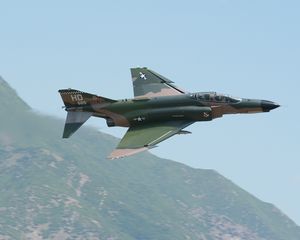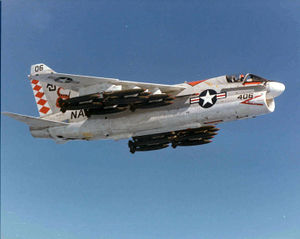Specialty aircraft
Contents
Learning objectives
- Set up keybinds
- Understand special nuances for specialty aircraft (e.g. pit limitations)
- Understand flight model for specialty aircraft
- Know how to load an F-16 pit for specialty aircraft operations
A-10
Has its own pit.
F-4 Phantom II
- Flaps are necessary for the Phantoms, default is CTRL+F11/F12 to open and close. You will see the flap status at the top left of the screen.
- Visibility through the HUD is poor. You can recenter your TrackIR by ducking your head and recentering; this helps a bit.
F-14 Tomcat
Carrier aircraft. Can carry the Aim-54 Phoenix long range missile. Has a poor 2D pit. Requires the hook to be bound as there is no cockpit button, unless you are using the F-16 cockpit.
F-111 Aardvark
- Flaps are necessary for the Aardvark, default is CTRL+F11/F12 to open and close
- Fuel consumption is higher than the F-16. Estimate 15-20 lbs of fuel per mile for JOKER/BINGO calcs. And ease off the afterburner.
- Often gets a TRP (Fuel Trap) warning. Maximize the throttle and reduce to clear the issue.
F/A-18
Carrier aircraft. Has a high quality and functional pit.
A-7 Corsair II
Carrier aircraft. Uses F-16 pit by default. Need to bind tail hook and flaps. CTRL-F9, CTRL-F10 for flaps.
This thing does not catch the catapult. It also only knows two throttle speeds: full and off. This makes things challenging when taxiing. To take off, get lined up between and behind the catapult by about 50 feet, drop full flaps, full throttle and take off. You may hear some loud grinding, that seems to be normal. Just raise your gear and carry on.
The flight model is not realistic; it has an instantaneous turn rate of 60 degrees.
To land, lower flaps fully, drop the tail hook and the gear, slow down to about 150 kts and catch the wire.
{{#invoke:Navbox|navbox}}



